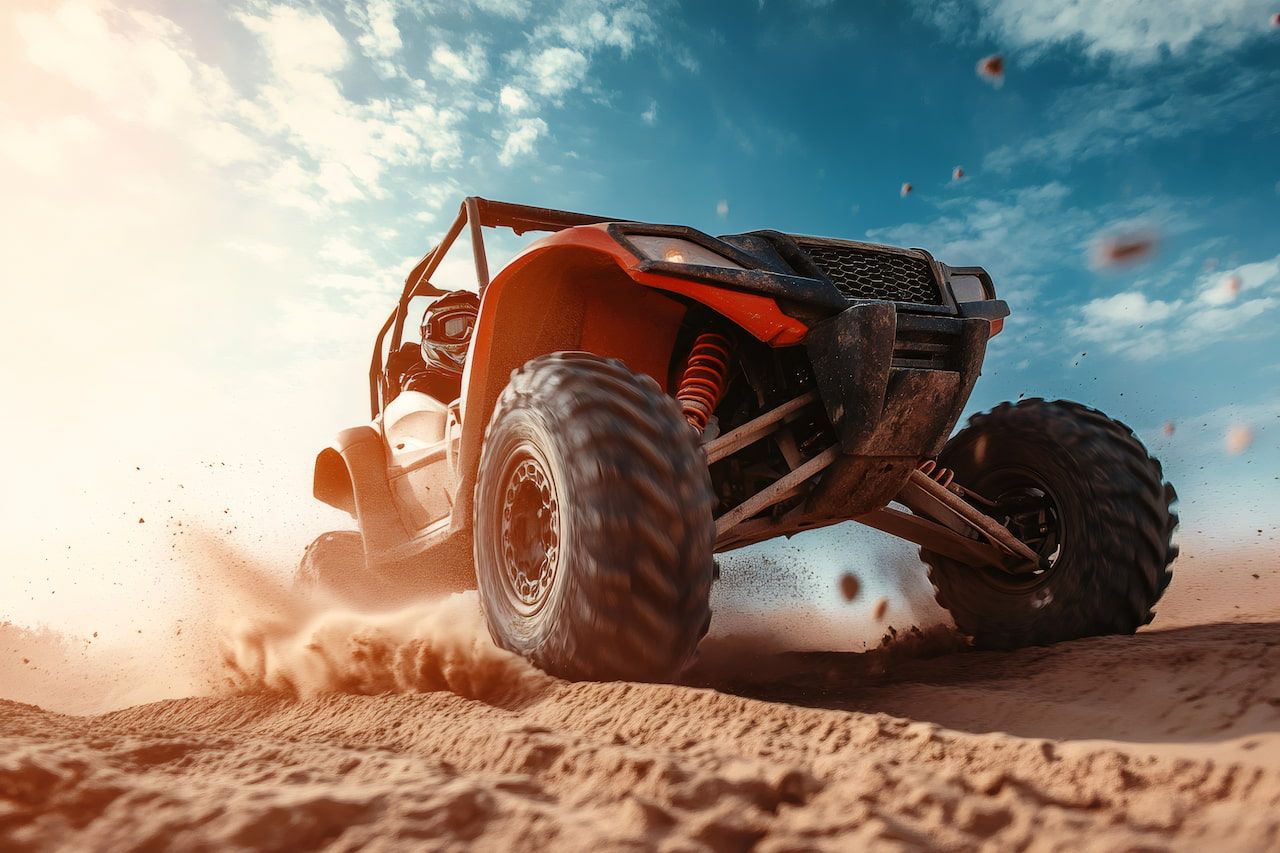UTVs (Utility Terrain Vehicles) are built for adventure, but understanding their suspension systems is crucial for achieving the best ride quality and handling. For new owners, grasping these fundamentals ensures a smoother and safer experience on every terrain.

Understanding UTV Suspension
What is UTV Suspension?
UTV suspension is a system of springs, shock absorbers, and linkages that connect a vehicle to its wheels. This system ensures a balance between comfort, stability, and control while navigating uneven terrains. Without an efficient suspension system, UTV rides would be harsh and difficult to manage.
Learn the basics of UTV suspension here.
Key Components of UTV Suspension
- Springs: Absorb shocks from uneven terrain, providing a smoother ride.
- Shock Absorbers: Regulate spring motion, ensuring stability and preventing excessive bouncing.
- Control Arms: Maintain wheel alignment and handle the movement of the suspension system.
- Bushings and Bearings: Reduce friction and wear, ensuring smooth operation.
Key Concepts and Essential Information
Understanding how each part contributes to overall ride quality is crucial for optimizing your UTV’s performance. Below are some essential factors to consider:
- Ride Height Adjustment: Adjusting the suspension’s height affects ground clearance and handling. Higher settings suit rocky terrains, while lower settings enhance cornering stability.
- Damping Control: Fine-tuning damping helps control how quickly the suspension compresses or rebounds after hitting an obstacle.
- Spring Preload: Adjusting preload can balance the vehicle’s weight distribution, improving comfort and performance.
- Suspension Geometry: Proper alignment ensures predictable handling and reduces tire wear.
Explore detailed UTV suspension learning resources here.
Getting Started with UTV Suspension: A Beginner’s Guide
Steps to Enhance Your UTV Suspension Knowledge
- Familiarize Yourself with the Manual: Understand your UTV’s specific suspension setup and recommended settings.
- Experiment with Adjustments: Test different settings for various terrains to find the best performance balance.
- Perform Regular Maintenance: Check for wear and tear on key components like bushings and shock absorbers.
Discover more beginner guides to UTV suspension here.
Developing Safe Practices and Essential Habits
To ensure a safe and enjoyable ride, follow these practices:
- Regularly inspect your suspension system for damage or wear.
- Adjust your suspension based on the terrain and load.
- Avoid overloading your UTV, as excessive weight can strain the suspension system.
Seeking Further Knowledge and Professional Guidance
If you’re unsure about making adjustments or notice unusual handling issues, consult a professional. Expert guidance can help diagnose problems and fine-tune your UTV for optimal performance.
Find professional UTV suspension guidance here.
Disclaimer: The information provided is for general guidance. Always refer to your UTV’s manual and consult professionals for specific advice.
Key Takeaways for New UTV Owners
Understanding UTV suspension is essential for enhancing ride quality, handling, and safety. By learning the basics, experimenting with settings, and seeking professional help when needed, you can maximize your UTV’s performance and enjoy smoother, safer rides.
